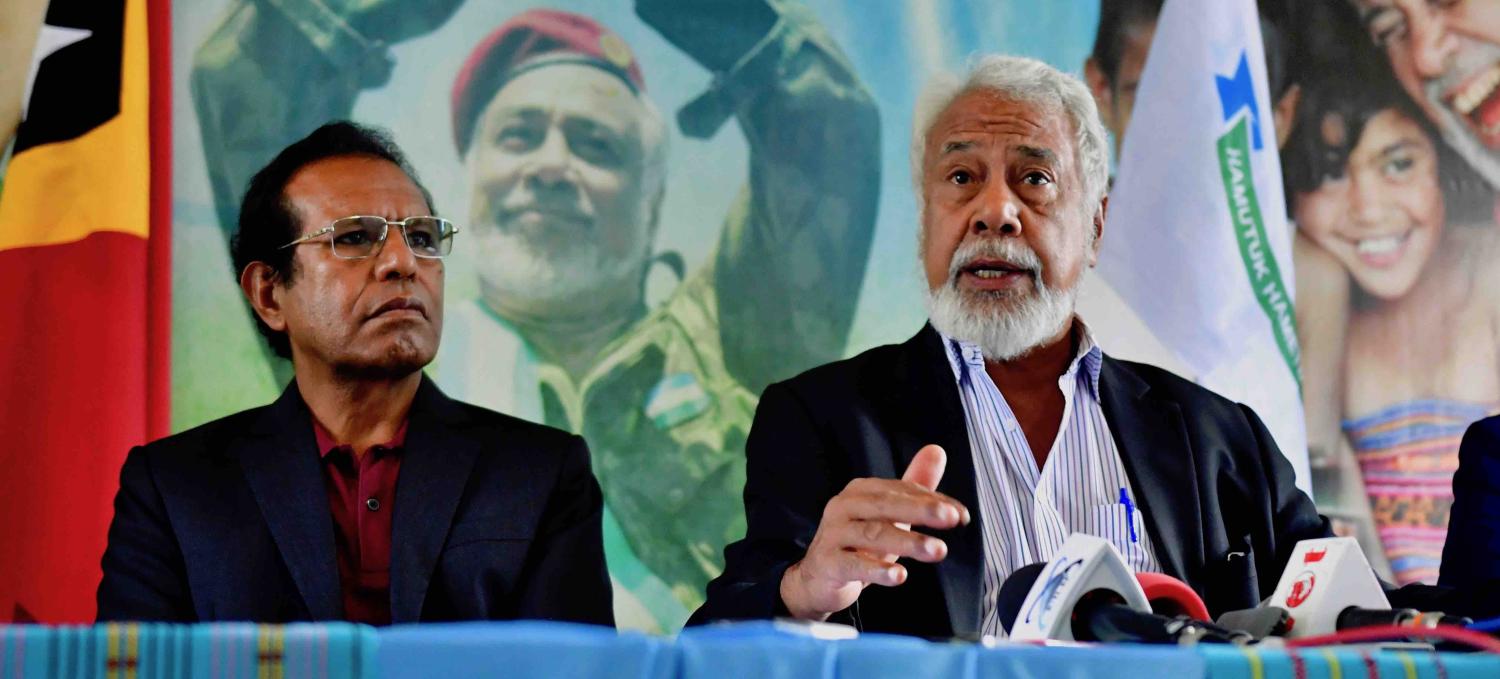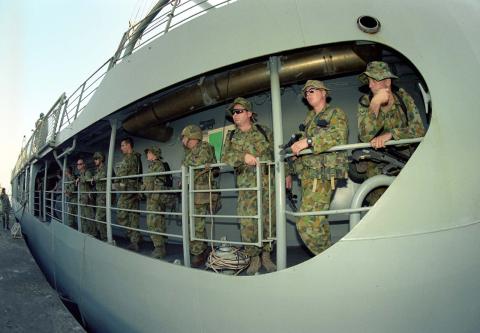After ten months of political gridlock and one dissolved parliament, Saturday’s decisive parliamentary election result represents one kind of victory for Timor-Leste’s fledgling democracy.
Winning an unusual outright majority of 34 seats in the 65-seat parliament, experienced coalition Change for Progress Alliance, or AMP, will seize government from Fretilin, whose failure to pass its program led to parliament’s premature end five protracted months ago.
The clear result, high voter turnout, and a largely peaceful campaign period have garnered Timor-Leste high praise, and this is deserved.
But praising newfound political stability at the hands of an old guard fails to recognise the country’s most pressing development challenges, and effectively silences half the population: speaking against authority isn’t particularly welcomed, so won’t meaningfully happen until yesterday’s leaders voluntarily step aside.
Half of voters shut out of decision-making
Saturday’s election and its July 2017 predecessor represented the first time Timorese born after the country’s 1999 independence could vote, and roughly half its 784,000-strong electoral roll is aged under 25.
On paper, Timor-Leste’s huge youth population appears influential. But in practice, decisions are still made by an elite group of ageing leaders from the country’s fight for independence.
Young leaders were meaningfully represented in parliament for the first time in the July election, with martial arts–linked youth-unemployment party KHUNTO securing five seats.
Turfed out of Fretilin’s minority government after demanding ministries in excess of its size, KHUNTO joined the AMP coalition with resistance hero and perpetual politician Xanana Gusmão’s National Congress for Timorese Reconstruction (CNRT) party and former president Taur Matan Ruak’s grass-roots development-focused Popular Liberation Party in an ideologically conflicted marriage.
But hundreds of thousands of voters and KHUNTO’s fed-up young candidates in government mean little when the system is weighted in favour of an older generation.
Social hierarchies and the lingering glory of the country’s independence heroes make it difficult for young Timorese to criticise current septuagenarian leaders. Resistance-era leaders remain atop folklore-ish pedestals and enjoy stirring and ongoing public support. (AMP’s successful election campaign featured attractive imagery of a 30-years-younger Gusmão in fatigues.)
Young voters are interested and engaged in politics, according to research conducted in late 2016, and are more interested in human development and job-creation than the large-scale infrastructure projects favoured by successive governments. Young people remain cynical about their leaders and despondent about the country’s direction: public polling before the July 2017 election had 50% of young voters distrusting the country’s direction, compared to only 20% two years previously.
In Dili ahead of Saturday’s election, young voters cited agriculture development, job creation, education, and health as key development priorities – areas largely neglected by successive megaproject-obsessed governments lead by Gusmão and Fretilin chief Mari Alkatiri.
Change won’t happen until the old guard wills it
Timor-Leste’s resistance-era leaders have contributed significantly to their country, and their continuing influence is understandable. The value of stability for a country whose recent history is mired with conflict cannot be underestimated.
But rising public sentiment is calling for new, young leadership – which can clearly only be meaningfully delivered with the endorsement and will of titans such as Gusmão.
The installation of Fretilin’s then 50-year-old Rui Maria de Araújo to the role of prime minster in 2015 appeared an exciting shift in leadership. A lamb in an unusual power-sharing agreement between Gusmão’s CNRT and Fretilin, its fierce rival, the softly spoken de Araújo presided for two years over a CNRT government, leaving Gusmão free from the scrutiny of the prime minister’s office, and Alkatiri to preside over millions of dollars of infrastructure megaprojects in the special economic zone of drought-stricken Oecusse enclave.
Hopefuls saw de Araújo’s appointment as a declaration that it was time for a new era of younger, policy-focused leadership, endorsed and enabled by the old guard.
But policy-focused de Araújo was replaced by 68-year-old Alkatiri, a combative figure in Timor-Leste’s personality politics who was previously forced to resign as prime minister during Timor-Leste’s 2006 political crisis.
Where to now for young leaders in waiting?
Timor-Leste’s youth population remains unheard and ill-considered by the country’s leadership, and will stay bound to the whims of old heroes.
KHUNTO’s presence in the AMP government offers a weak promise – securing 7% of the vote on its own in 2017, it’s unlikely to play a leading role in the expected new Gusmão-led government.
The presence of smaller parties in that election indicates that while participation in the resistance remains a powerful factor influencing voters, new voters are perhaps less compelled than older citizens to follow the old heroes.
But ultimately, until Gusmão, Alkatiri, and co. swallow their pride and step aside for a new generation of leaders, Timor-Leste’s young voters remain shackled to an already stale new leadership and shut out from influencing the country they will inherit.

